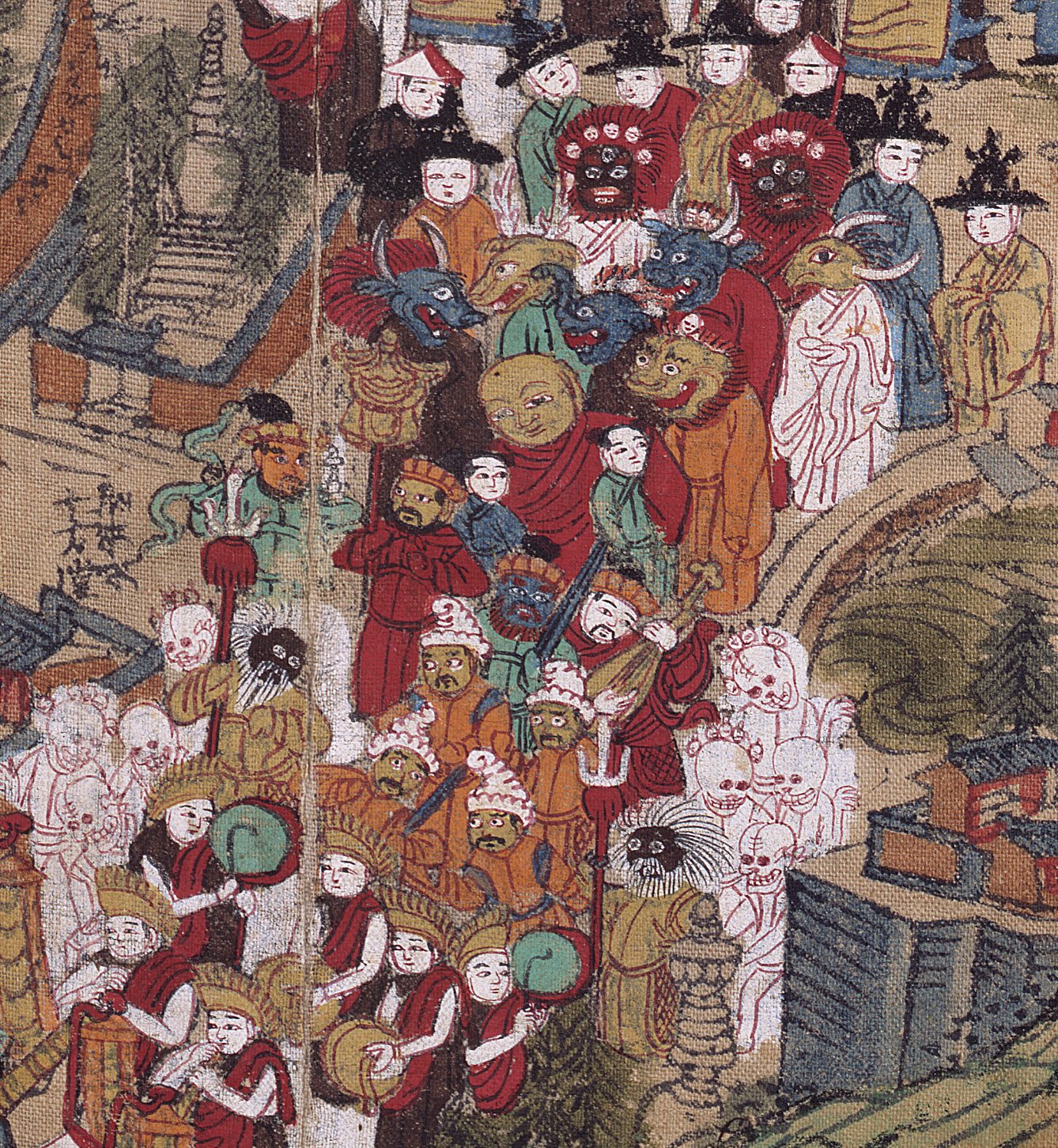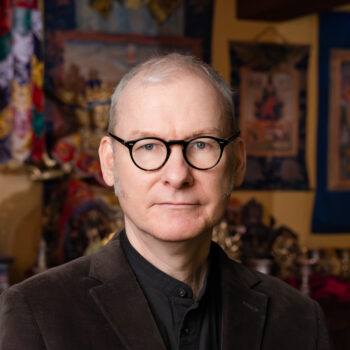WutaishanPilgrimage to Five Peak Mountain
Rubin Museum
150 W. 17th St., NYC

Pilgrimage Map of Wutaishan; Cifu Temple (慈福寺), Wutaishan, China; Lhundrup (from
Amurbayasqulangtu Monastery, Mongolia); dated 1846; Painted xylograph; Rubin Museum of Art;
C2004.29.1 (HAR 65371)
The sacred mountain Wutaishan (Mount Wutai), located in Shanxi Province, China, is believed to be the earthly abode of Manjushri, the bodhisattva of wisdom, and for one thousand years it has been a focus of transnational pilgrimage for the Chinese, Tibetans, Mongols, and Manchus alike. This multiculturalism, endemic in Himalayan art, is reflected in the objects in the exhibition coming from China, Nepal, Tibet, and Mongolia, which includes paintings, sculptures, masks, and book covers, plus a six-foot wide woodblock print of a panoramic view of Mount Wutai filled with temples and miraculous visions. As Manjushri was seen as the patron deity of China, Wutaishan was also a focus of imperial attention, and rulers tied their own legitimacy to this deity and promoted his cult at Mount Wutai, blurring and intertwining religious, state, ethnic, and even artistic identity.
